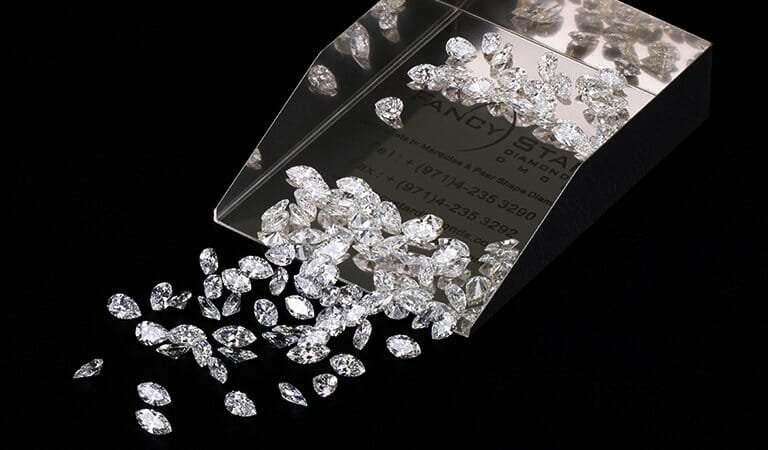
An In-Depth Analysis of the World’s Biggest Diamond Supplier
Diamonds, known for their unparalleled beauty and toughness, are at the heart of a multifaceted and complex global industry. Sourced from the depths of the earth, these precious gemstones pass through numerous hands before they end up adorning luxury jewelry or being used in high-tech applications. But what exactly makes a diamond supplier the biggest diamond supplier in the world? This article will delve into the characteristics and operational efficiencies that set the world’s biggest diamond supplier apart.
Operational Processes Of The Biggest Diamond Supplier
The operational processes of the biggest diamond supplier are both intricate and extensive, encompassing every stage from exploration to distribution. Here are the key steps:
1. Exploration:
- The supplier uses advanced geoscientific techniques and technologies to identify potential diamond-bearing areas.
- This includes aerial surveys, geological mapping, and sampling to detect diamond indicator minerals.
- Once potential sites are identified, more detailed exploration is conducted, which may involve drilling and bulk sampling.
2. Extraction:
- Based on the geographical and geological characteristics of the diamond deposit, either open-pit or underground mining is conducted.
- Open-pit mining involves removing layers of soil and rock to expose the diamond-bearing rock, while underground mining is used when the diamond deposit lies deep beneath the surface.
- In some cases, marine mining is used to extract diamonds from the seabed, using specialized ships and equipment.
3. Processing:
- The mined ore is transported to processing plants where it is crushed and screened to separate the diamonds from the surrounding rock.
- The diamonds are then sorted by size and weight. The sorting process may also involve x-ray or laser technology to identify and separate the diamonds.
4. Cutting and Polishing:
- Once sorted, the rough diamonds are then cut into different shapes and sizes, following precise mathematical formulas to achieve maximum brilliance.
- The cutting process also includes cleaving (splitting the diamond along its grain) and bruting (rounding the diamond).
- The diamonds are then polished to give them their characteristic luster and shine.
5. Quality Control:
- The diamonds undergo a meticulous quality control process, where they are evaluated based on the Four Cs: Carat, Cut, Color, and Clarity.
- The diamonds are certified by trained gemologists, ensuring their quality and authenticity.
6. Distribution:
- The diamonds are then packaged and distributed to retailers and manufacturers around the world.
- The supplier maintains a vast global distribution network, allowing it to reach customers quickly and efficiently.
- Through these operational processes, the largest diamond supplier manages to consistently deliver high-quality diamonds to markets worldwide. Their rigorous procedures, combined with their commitment to ethical and sustainable practices, are what sets them apart from other players in the industry.
Loose Diamonds Suppliers
Being one of the leading loose diamonds suppliers in the world, the largest diamond supplier maintains a broad and diversified inventory catering to a range of clients. This includes jewelry manufacturers, diamond merchants, and individual customers seeking a personalized diamond experience. The vast selection of loose diamonds is an invaluable asset, offering a variety of options in cuts, sizes, and qualities. Here are some of the key features that make the supplier a leader in loose diamond distribution:
1. Extensive Range:
- The supplier offers an extensive range of loose diamonds in all shapes and sizes, from traditional round cuts to modern fancy shapes such as princess, oval, pear, cushion, and more.
- The diamonds also vary in carat weight, from smaller, more affordable diamonds to large, high-carat diamonds for high-end pieces.
2. Quality Control:
- Every diamond is subjected to rigorous quality control checks to ensure that it meets the highest standards of cut, color, clarity, and carat weight.
- Certified gemologists evaluate each stone, providing an accurate grading report for every diamond.
3. Ethical Sourcing:
- The supplier is committed to ethical sourcing of diamonds. Every diamond is guaranteed to be conflict-free and sourced from mines that adhere to strict labor, trade, and environmental standards.
4. Educational Resources:
- To help customers make informed decisions, the supplier provides comprehensive educational resources on diamonds, their characteristics, and how to choose the perfect diamond.
5. Customer Service:
- The supplier provides expert customer service, assisting clients in navigating the vast selection of loose diamonds and helping them find the perfect diamond that fits their requirements and budget.
6. Global Distribution Network:
- The supplier’s expansive global distribution network ensures that diamonds can be delivered to customers worldwide in a timely manner.
Conclusion
In conclusion, there are several distinct factors that define the world’s biggest diamond supplier. These span the breadth and depth of their operations, the scale of their distribution networks, their commitment to quality control, and the innovation they bring to the diamond industry. Moreover, their influence on global economies and societies, and their dedication to ethical and sustainable practices play a crucial role in establishing their standing.
These factors combined set the largest diamond supplier apart, creating a significant ripple effect across the industry and setting the benchmark for other suppliers. Understanding these elements provides invaluable insights into the workings of the global diamond industry, and the influential role of the biggest player within it.
